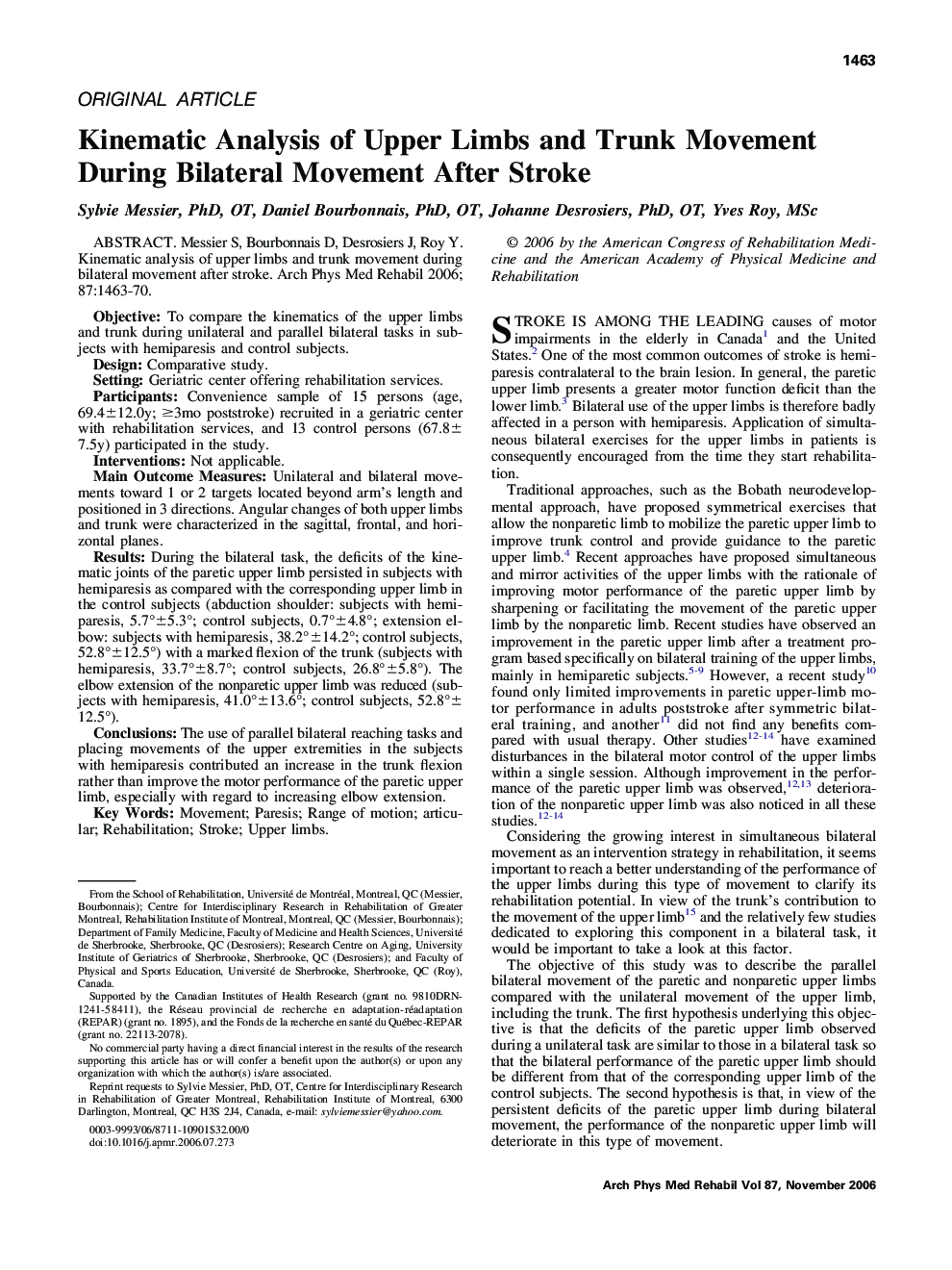| Article ID | Journal | Published Year | Pages | File Type |
|---|---|---|---|---|
| 3453093 | Archives of Physical Medicine and Rehabilitation | 2006 | 8 Pages |
Messier S, Bourbonnais D, Desrosiers J, Roy Y. Kinematic analysis of upper limbs and trunk movement during bilateral movement after stroke.ObjectiveTo compare the kinematics of the upper limbs and trunk during unilateral and parallel bilateral tasks in subjects with hemiparesis and control subjects.DesignComparative study.SettingGeriatric center offering rehabilitation services.ParticipantsConvenience sample of 15 persons (age, 69.4±12.0y; ≥3mo poststroke) recruited in a geriatric center with rehabilitation services, and 13 control persons (67.8±7.5y) participated in the study.InterventionsNot applicable.Main Outcome MeasuresUnilateral and bilateral movements toward 1 or 2 targets located beyond arm’s length and positioned in 3 directions. Angular changes of both upper limbs and trunk were characterized in the sagittal, frontal, and horizontal planes.ResultsDuring the bilateral task, the deficits of the kinematic joints of the paretic upper limb persisted in subjects with hemiparesis as compared with the corresponding upper limb in the control subjects (abduction shoulder: subjects with hemiparesis, 5.7°±5.3°; control subjects, 0.7°±4.8°; extension elbow: subjects with hemiparesis, 38.2°±14.2°; control subjects, 52.8°±12.5°) with a marked flexion of the trunk (subjects with hemiparesis, 33.7°±8.7°; control subjects, 26.8°±5.8°). The elbow extension of the nonparetic upper limb was reduced (subjects with hemiparesis, 41.0°±13.6°; control subjects, 52.8°±12.5°).ConclusionsThe use of parallel bilateral reaching tasks and placing movements of the upper extremities in the subjects with hemiparesis contributed an increase in the trunk flexion rather than improve the motor performance of the paretic upper limb, especially with regard to increasing elbow extension.
